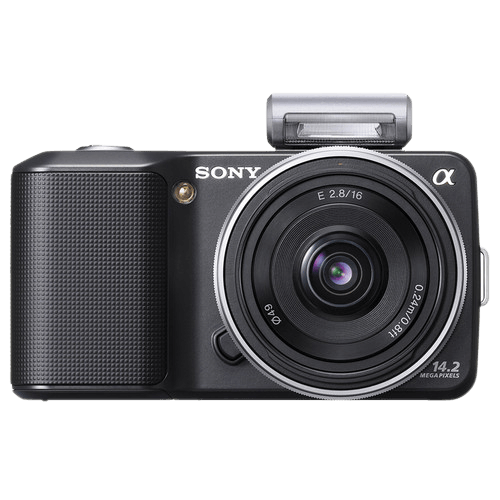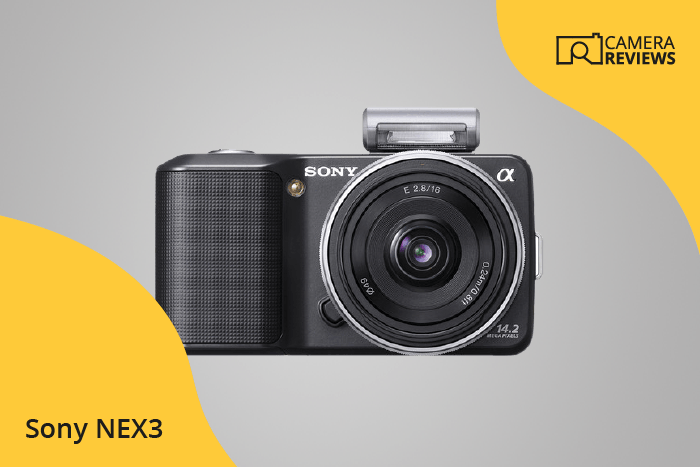Sony NEX3 Specs and Scores

The Sony NEX3 earns a score of 45/100 in general specifications. Announced on May 1, 2010, and released in the same year, this mirrorless camera launched at a price of $550. Measuring 117 x 62 x 33mm and weighing 297g (0.65lbs), it offers a compact and lightweight design.
Considering its age, the NEX3’s specifications may not compete with current market offerings. However, its size and weight make it a convenient option for casual photography.
Sony NEX3 Overview and Optics
The optics of the Sony NEX3 receive a score of 49/100. This camera features 14.2 megapixels and a shooting speed of 7 frames per second. Its sensor is a CMOS type, paired with a Bionz processor. The DXOMARK score for the sensor is 68, and the sensor size is APS-C. The lens mount is Sony E, and the camera has image stabilization as well as a 3:2 aspect ratio.
Compared to other cameras in today’s market, the Sony NEX3’s optics may not be the most impressive. However, its 14.2-megapixel sensor and 7fps shooting speed are still capable of producing good quality images. The APS-C sensor size is a standard in many DSLR and mirrorless cameras, and the Sony E lens mount offers compatibility with various lenses.
The Sony NEX3, with its optics score of 49/100, may not be the top choice for photographers seeking the latest and greatest in camera technology. However, it remains a capable camera for those who prioritize simplicity and ease of use in their camera equipment.
Sony NEX3 Video Performance
The Sony NEX-3 lacks video functionality. This camera does not record videos.
Sony NEX3 Features and Benefits
The Sony NEX3 scores 41/100 in the features department. It has a 3-inch screen with a resolution of 920,000 dots. While it lacks a touchscreen, it does come with a flip screen, providing flexibility for various shooting angles. However, it does not include modern connectivity options like GPS, WiFi, or Bluetooth.
In today’s market, these specifications can make the Sony NEX3 less attractive to potential buyers. The absence of a touchscreen and connectivity features means that it doesn’t offer the convenience and functionality that many users expect from modern cameras. The 3-inch screen and flip screen are useful, but they may not be enough to compensate for the missing features.
Considering the Sony NEX3’s feature score and specifications, it is evident that the camera has limitations in today’s competitive market. While it has some useful features, the lack of modern connectivity options and a touchscreen hinder its appeal to contemporary photographers.
Sony NEX3 Storage and Battery
The Sony NEX3 receives a storage and battery score of 21/100. It features a single memory card slot, which supports SD, SDHC, SDXC, Memory Stick Pro Duo, and Pro-HG Duo cards. While having multiple card slots is more desirable, the compatibility with different card types is a plus. The battery life is 330 shots, powered by an NP-FW50 battery. However, the camera lacks USB charging capabilities.
In the current market, the Sony NEX3’s storage and battery performance is not impressive. Many newer cameras offer better battery life, multiple card slots, and USB charging options. Therefore, the NEX3 may not be the best choice for users who prioritize storage and battery capabilities.
Sony NEX3 Alternatives
Do you want to know how the Sony NEX3 compares to its competitors? Have a look at the most popular comparisons for this camera below:
You can also have a look at some other popular comparisons for inspiration:
- Canon EOS R6 vs Sony a9
- Canon EOS M50 vs Sony a6300
- Nikon D850 vs Sony a7R V
- Panasonic Lumix DMC GX1 vs Sony a5000
- Fujifilm X-H2 vs Sony a7R IV
Sony NEX3 FAQ
Does the Sony NEX3 Have Built-in Image Stabilization?
Yes, the Sony NEX3 features built-in image stabilization, which helps to reduce camera shake and produce sharper images, particularly in low-light conditions or when using longer focal lengths.
Does the Sony NEX3 Support 4K Video Recording?
No, the Sony NEX3 does not support 4K video recording. The maximum video resolution it can record is Standard HD (1280×720 pixels), allowing for good quality videos but not at the ultra-high definition of 4K.
What Size Sensor Does The Sony NEX3 Have?
The Sony NEX3 is equipped with an APS-C sized sensor, which is larger than the sensors found in most compact cameras. This allows for better image quality, improved low-light performance, and greater control over depth of field.
Does the Sony NEX3 Have a Dual Memory Card Slot?
No, the Sony NEX3 does not have a dual memory card slot. It features a single memory card slot, which supports SD, SDHC, and SDXC cards for storing your images and videos.
Does the Sony NEX3 Have a Touch Screen?
No, the Sony NEX3 does not have a touch screen. It features a 3-inch tilting LCD screen for composing images and navigating menus, but it does not support touch input.
Does the Sony NEX3 Have Wi-Fi and Bluetooth?
Unfortunately, the Sony NEX3 does not have built-in Wi-Fi or Bluetooth capabilities. This means that wireless transfer of images and remote control of the camera are not possible with this model.
Does the Sony NEX3 Have GPS?
No, the Sony NEX3 does not have built-in GPS functionality. This means that geotagging your photos with location data is not possible with this camera, unless you use an external GPS device.
Is the Sony NEX3 Weather Sealed?
No, the Sony NEX3 is not weather-sealed. This means that it is not designed to withstand harsh weather conditions, such as heavy rain or dust, and should be protected accordingly during use.
Does the Sony NEX3 Have a Built-in Flash?
No, the Sony NEX3 does not have a built-in flash. However, it does feature a hot shoe for attaching an external flash, allowing you to add extra light when needed for your photography needs.

